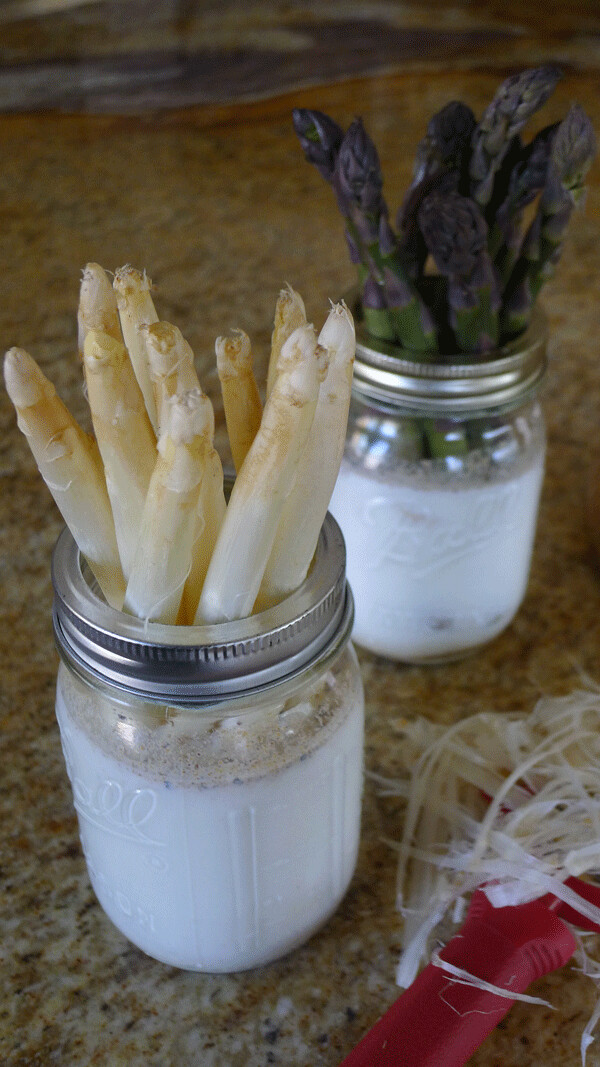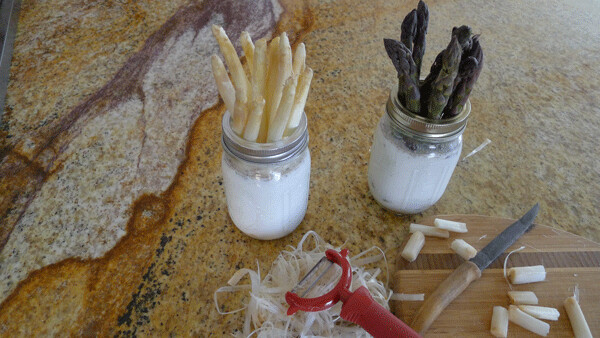News & Articles
Browse all content by date.



By the time you read this, most of Germany will have eaten its way into a frenzy known as spargelzeit, a two-month long, white asparagus-fueled celebration of asparagus and spring. By summer solstice, about 125,000 tons of white asparagus will be consumed, plus another 15 tons of green. After that, the spears are allowed to grow freely, feeding the below-ground crowns for the rest of the season, and ensuring a bountiful harvest the following spring.
Until the harvest stops, the feast is on. From roadside stands to grand festivals, with peeling contests and asparagus queens wearing asparagus crowns, with picnics at u-pick asparagus farms, guided hikes along asparagus farm trails, and every other kind of asparagus-related mayhem you can and can’t imagine. All the while, the guest of honor continues growing underground, waiting to feed the next round of revelers.
White asparagus is the the exact same variety as green, but underground, in complete darkness, the shoots don’t bother to produce chlorophyll, or and a host of other related molecules. Apparently those photosynthetic materials have some flavor. While green asparagus is often described as “grassy” and “complex,” the flavor of white asparagus is praised as “subtle.”
White asparagus is labor-intensive to grow, expensive to buy, and a pain-in-the-neck to prepare-it must be peeled. White asparagus is also less nutritious, with less protein, calories and fiber than green. It’s a lot of work and expense for a relatively tough, nutrient--poor and arguably bland version of its above--ground, counterpart. So there must be a good reason for its popularity.
Freshly unearthed and dusted with brown dirt, the white shoots are shockingly bright. Eating them gives the impression of hungry humans not waiting for spring, clawing through the dark earth in search of anything to eat.
That’s my image, at least. But from what I’ve read, if you mention spargelzeit to the average German, their mental screen likely flashes a serving of light yellow spears lined shoulder-to-shoulder on a plate, flooded with Hollandaise and flanked with peeled potatoes. That, with or without ham, is the most popular serving, and makes one wonder if spargelzeit is truly an embrace of spring, or a drawn-out good-bye to the drab but decadent pleasures of the winter diet.
I paid two dollars more for a bunch of white asparagus than I would have for bunch of green, and brought those icy spears to my lab.
One of the most striking qualities of white asparagus is its bright, translucent luminosity. The radiant shoots attract the eye, and belong where they can be seen, and where sunbeams can pass through their pigment-free bodies. The Lacto White Asparagus recipe from The Noma Guide to Fermentation was a logical place to start.
Lacto refers to a type of microorganism, not to milk. It’s an extremely simple process that requires only salt and water. After a few days in the jar, a subtle white flavor began to develop. Not in a grassy way, but equally vibrant. The spears become crunchy sticks of lemon perfume, with hints of bitter, and a fermented umami fullness that increases daily. It’s hard to imagine these luminescent pickles being as good if they were made with green asparagus, which I guess means I’m warming up to white.
I would print Noma’s Lacto White Asparagus recipe here, but it’s not mine to share. I do have a little asparagus recipe of my own, in which asparagus is cooked half-submerged in a milk-based sauce inside a double boiler.The thick lower parts, which are most in need of cooking, get it, while the tips receive a mere touch of steam. The cut ends absorb the savory milk into their vasculature, giving it a chowder-like flavor, while the tips remain lightly seasoned and barely cooked.
I tried this recipe with both colors of asparagus, and now I’m eating my early skepticism of the white form, as well as the white asparagus itself. It has a pleasant, clear and simple flavor. The white still had more fiber, despite my having peeled it, but that was OK. I didn’t mind a little chewing. It’s spring, after all.
Milky White Asparagus
An average-sized bunch of asparagus will require two pint-sized glass Mason jars, or similar vessel. You also need a pot large enough to stand up asparagus inside, and allow room to cover the pot.
1 bunch white asparagus (as thick as you can find, as you will have to peel it)
½ pint of milk
1 clove garlic, sliced
1 pinch nutmeg
½ teaspoon of salt
1 slice of lemon
½ tsp course black pepper
Peel the white asparagus, starting from just below the tip where the fiber starts. Trim the bottoms if you wish.
Put the lemon slice in the jar, flat against the bottom. Add the spices and garlic, fill the jars halfway with milk. Add the asparagus spears, with the cut ends against the lemon, and more milk if necessary to bring milk level to an inch below the rim.
Pack the spears into the jar, cut sides against the lemon slice at the bottom. Add water to a large pot, enough so that when the jar is placed in the pot, the water level is about an inch below the milk level inside the jars. Sprinkle a pinch each salt and pepper onto each jar from above. Turn heat to high and boil.
While that’s going, simmer the peels and cut bottoms in two quarts of water, along with any pieces of carrot, onion or celery you may have, old or new, scrap or fresh. Cook for about an hour, and strain. Use as a stock or serve as is, salted, or add leftover asparagus milk, to taste.
Boil for 15 minutes, then put the lid on and turn off the heat. After five minutes, remove the jars and let cool to room temperature.
Pluck the spears from the jar, holding the dry, sauce-free tip in your hand. Munch the saucy base, toward the tip. The sauce in your mouth flavors the delicate tips as you chew, but you can also dip them into the sauce.

| Tweet |


